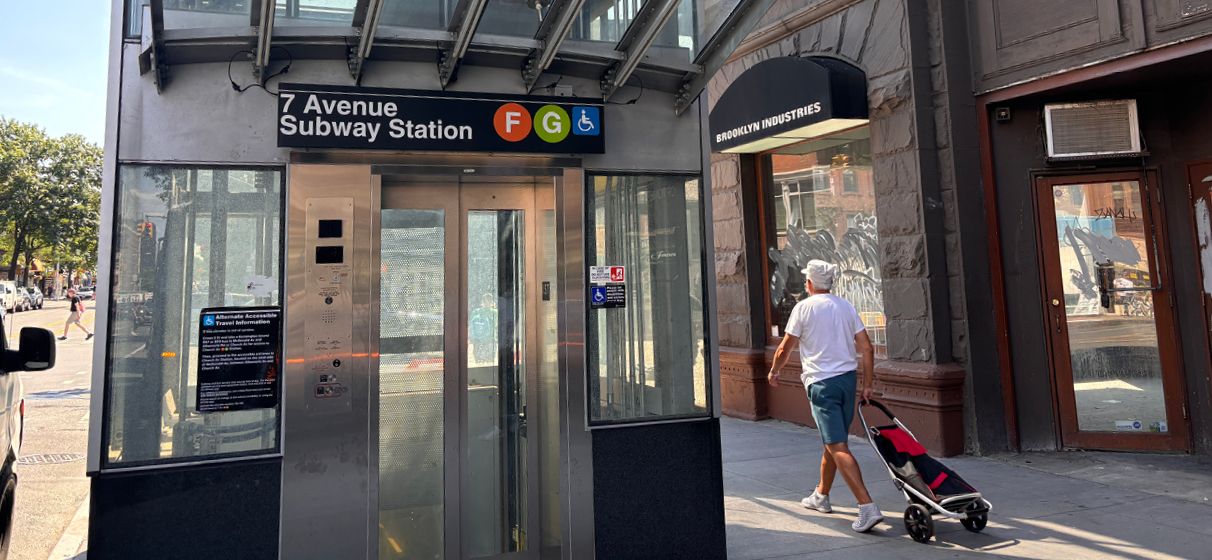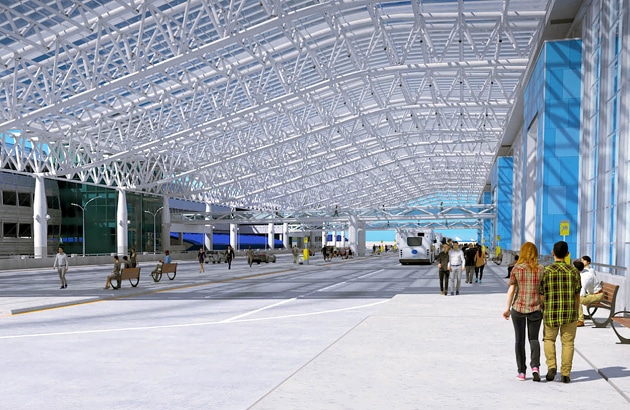STV is spearheading the design of accessibility improvements for 10 stations in the New York City Subway and Staten Island Railway (SIR) networks, which will enhance accessibility at 70 stations across New York City.
Under two separate design-build contracts – one with Judlau Contracting, Inc. and the other with Tully Construction Co. Inc. – STV focuses on making these stations more compliant with the Americans with Disabilities Act (ADA) of 1990. The project showcases STV’s comprehensive transit facility expertise, encompassing the design and installation of new elevators, structural modifications and upgrades to rail communications and power systems.
This project holds personal significance for many on our team who use the New York City transit system daily. By contributing to this initiative, STV is helping to create a more inclusive and accessible transit system for all New Yorkers and visitors.
Many of these stations were delivered using the design-build delivery method. And due to the size and complexity of the NYC Transit subway and SIR systems, each of the 10 stations brought their own unique set of challenges and obstacles to overcome.
For example, Grand Street Station, which opened last summer, is an underground facility beneath the intersection of Grand Street and Bushwick Avenue along the subway system’s L/Canarsie Line. Due to its shallow construction, the station lacked a mezzanine and free transfers between Brooklyn- and Manhattan-bound trains. Our team designed around the deep excavation near existing buildings, which required underpinning with minipiles and steel brackets. Utility relocation and road narrowing for the elevator also posed challenges.
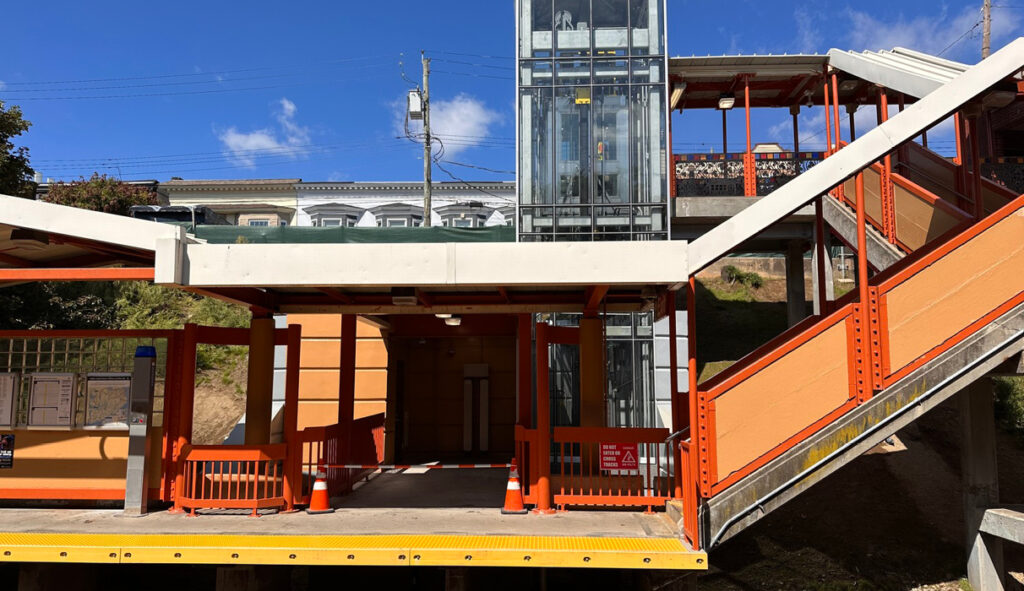
Similarly, the Seventh Avenue station on the F and G/Culver line in Park Slope, which first opened in 1933, features four tracks, two island platforms, and a full-length mezzanine with exits at Seventh and Eighth Avenues. As part of the station’s design, our team aimed for clear visibility, and accessibility, and to minimize disruption to commuters during construction. Our team also addressed challenges due to proximity to existing buildings by proposing a street-to-mezzanine elevator near Seventh Avenue and Ninth Street, utilizing the north-side corridor for ADA-compliant access and positioning the elevators directly above the boarding areas, utilizing spaces for additional stairways that were part of the station’s original construction.
At many of these stations, our team had to contend with updating infrastructure that was 100 years old – or older – all while preserving the historic architectural integrity of the original structures. At SIR’s New Dorp Station, which originally opened in 1860, despite undergoing major changes in the 1960s, many challenges in improving the station remained, such as contending with narrow access to the St. George-bound platform and working around existing signal and electrical boxes beneath the stairs. As an open-cut station, a big challenge was working with the existing retaining walls and accommodating the proposed St. George-bound elevator vestibule at the platform level.
At the East 149th Street Station in the Bronx, which is located as part of the underground No. 6/Pelham Line and originally opened in 1919, STV’s design aimed to enhance visibility, accessibility, and equal access to all public station areas while minimizing excavation and disruption, especially in control areas. A significant challenge involved deep excavation for elevator machine rooms, which our team addressed by proposing elevators with overhead machine rooms accessible from street level. Smaller control rooms for both elevators were located at the platform level. Achieving this outcome at a station that opened in 1919 and has received limited maintenance since then is a remarkable achievement.
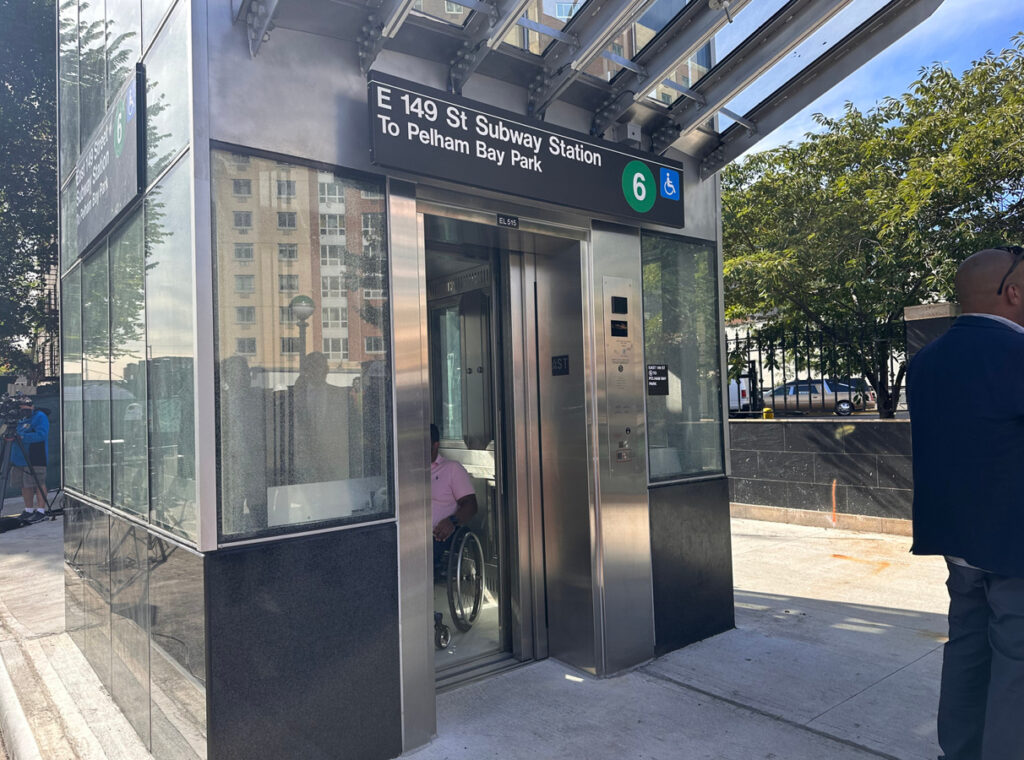
At the Northern tip of Manhattan at the historic Dyckman Street Station, which originally opened in 1906 along the No. 1/Broadway-Seventh Avenue Line and is listed on the National Register of Historic Places, all designs needed to be approved by the New York State Historical Preservation Office. During the design phase, we found that the conduits along the station’s northbound platform plate girders required an elevator to be set back to avoid relocation. The limited clearance at the existing stair for an accessible path to the ADA-compliant boarding area led to modifications of the canopy columns. The elevator, situated outside the existing station house, was connected via a weather-protected corridor extension using the existing ramp. Seeing the steel elevator tower rise and the glass enclosures installed was a major milestone since our team worked closely with the manufacturer to create a clean exterior with maximum visibility into the elevator.
For other station improvements, our team innovated solutions to help preserve long-standing system connections for riders. At North Brooklyn’s Metropolitan Avenue (G train) and Lorimer Street (L train) stations – which are linked together via a free transfer – our team worked closely with the MTA and the community to integrate six new elevators while still maintaining the free transfers. Because the transfer passageway between the Canarsie and Crosstown lines is not accessible, riders can now use the new elevators for transfers for free by tapping out at one station’s One Metro New York (OMNY) reader and tapping back in at the other station’s entrance. This significant milestone underscores the MTA’s commitment to creating an inclusive and equitable transit system, ensuring that all New Yorkers can seamlessly and autonomously navigate the city’s vast subway network.
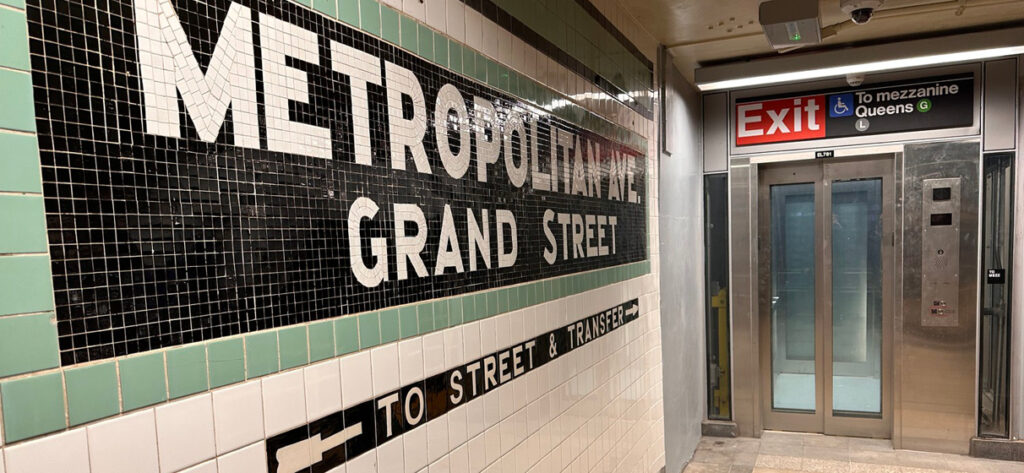
For those near the Beach 67th Street subway station in Queens, access has been improved with the installation of two new elevators, including a three-stop elevator from street to platform, a new fare array at platform level, a new staircase and new ADA boarding area. The team was challenged with making the street-level structures flood resistant due to the high water table in the area. The elevators include a new fire alarm system, smoke and heat detectors, cameras and an emergency two-way communication system. This enhances customer safety and improves communication for riders with hearing or speech disabilities.
With the program nearing its completion, our team is filled with immense pride. This work has created a transit system where the elevators are readily accessible, wayfinding is clear, and the overall station environment has improved. The program underscores the commitment of STV to accessibility and inclusivity and reflects a collective effort to positively impact the lives of New Yorkers. This work benefits all station users and the entire neighborhood, extending beyond people with disabilities. That’s the essence of true accessibility.
